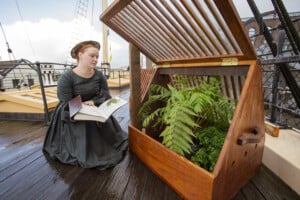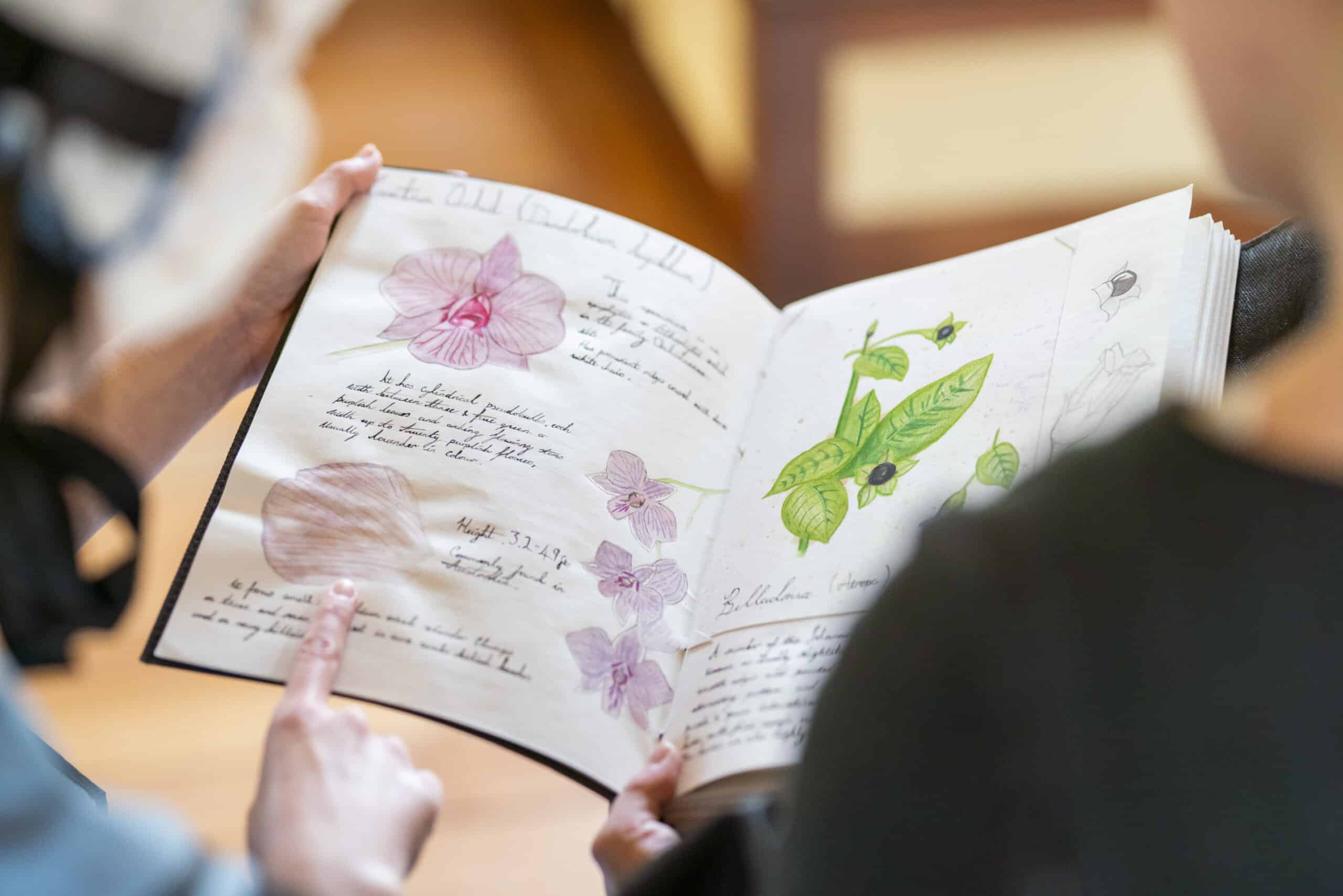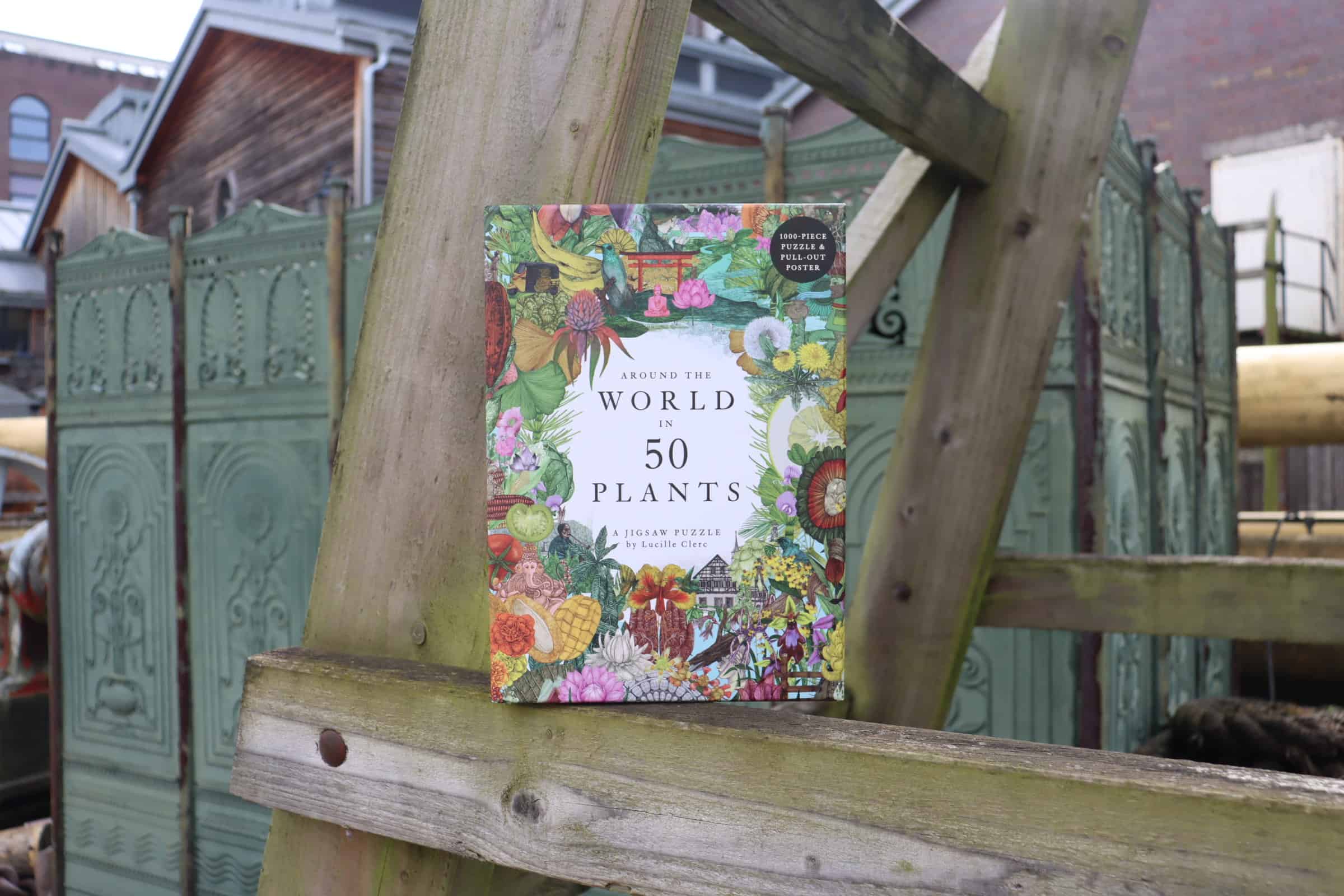Living Plants Aboard the SS Great Britain
Brunel’s SS Great Britain reveals botanic installation celebrating the Australian roots of the English Garden. From Royals to rhododendrons, Brunel’s iconic ship carried precious cargo during the Victorian era.
Living plants will return to the SS Great Britain – Bristol’s number one visitor attraction – for the first time in 150 years. From March 26, the ship’s weather deck will display six beautifully reconstructed Wardian cases for visitors to explore. Wardian cases were mini glass houses which, in 1833, were adapted to transport living plants on the decks of ships across the oceans.
In its day, the SS Great Britain transported royalty, nobility, and sports stars alike. But this year, the team behind the iconic vessel is marking the ship’s role in horticultural history by celebrating its lesser-known plant passengers.
The modern-day cases are replicas of the last surviving ship-board example designs, which are kept in the Kew Gardens archive. The cases will celebrate the inbound and outbound plant species that the ship transported across the world between 1859 and 1875.
As the fastest ship travelling to Australia in her day, many traders (nursery workers, plant-hunters and botanists) used the SS Great Britain to transport their precious cargo across long distances. Antipodean ferns and tree ferns, which were hugely popular in the conservatories and glass houses of Victorian Britain, were often transported on the ship. The SS Great Britain also carried orchids, which could command huge prices as ornamental pieces at the time.

Thanks to new research from the Brunel Institute, which studied the ship’s cargo manifests, each case will be planted with a true-to-life ‘order’ to make the global crossing. The innovation of the Wardian case revolutionised long-distance plant transport. Each sealed case created its own microclimate, allowing the flora to survive despite only being watered once during a two-month crossing.
Alongside exploring the Wardian cases, visitors to Brunel’s SS Great Britain can enjoy a new botany-themed ‘discovery talk’ and participate in horticultural workshops throughout the year. The ship will also add a ‘botanist’s cabin’ to its museum, depicting the sights, sounds and smells of life onboard and highlighting the important work and research of Victorian botanists and ‘plant hunters’.
By enabling the global migration of plants, the SS Great Britain connected key botanists, entrepreneurs and ‘plant hunters’ from across the world.
Iona Keen, Head of Interpretation at Brunel’s SS Great Britain, said:
“We’re so excited to bring the horticultural history of the SS Great Britain to life for the first time. From March, visitors can immerse themselves in the untold botanical story of Brunel’s famous ship and discover the delights of our Wardian cases. Each has been faithfully restored with the help of our partners from across Bristol’s growing communities and, collectively, they offer a fascinating insight into the floral favourites of the Victorians. Our new exhibits provide insight into just how significant the use of Wardian cases and steamships were as living plants started to be moved between continents for the first time.”


Book Your Day Out



